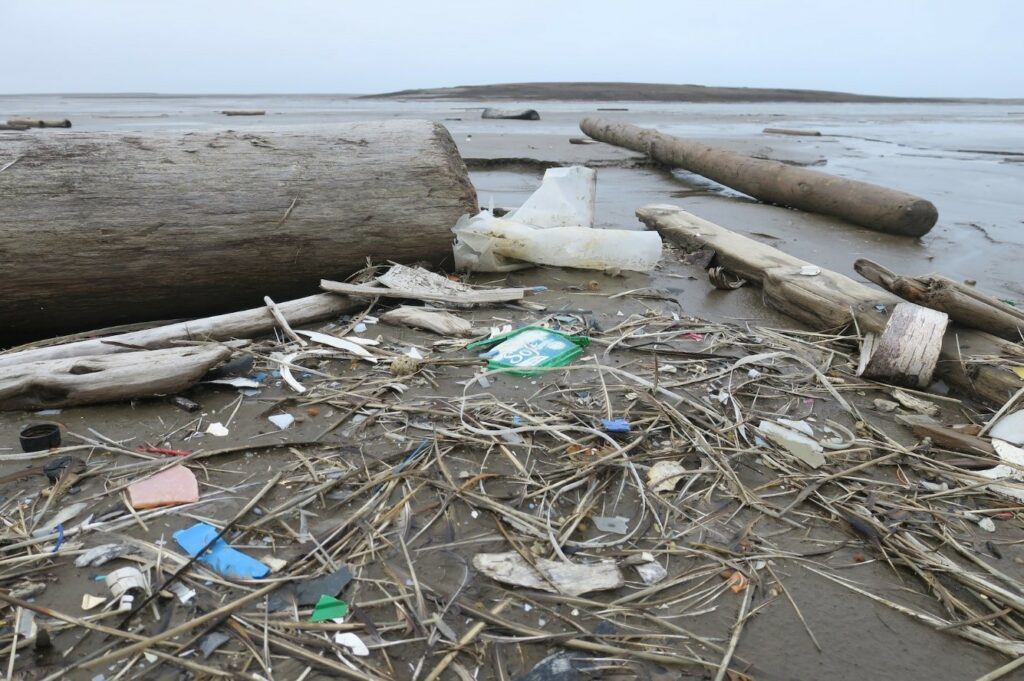79.27° North, 101.52° East – Clear sky, 2.5 °C, wind speed: 2.7 m/s
Floating litter in the Barents, Kara and Laptev Seas
Much of the research being conducted on the Russian Arctic Century Expedition aims to understand the impacts of global change on the Arctic. A key focus is how relatively warm water from the Atlantic Ocean penetrates the Arctic Ocean, contributing to the rapid loss of Arctic sea-ice. However, heat is not the only thing that is carried by the Atlantic water masses as they round the top of Scandinavia. The North Atlantic Ocean is not only warmer, but also much more polluted than the Arctic Ocean. A South African researcher is assessing how much floating litter is drifting all the way to the Arctic.
Oceanographic models predict that floating litter will accumulate in so-called ‘garbage patches’ in the central gyres of the sub-tropical ocean basins. The North Pacific garbage patch is best known, but similar accumulations of litter have been confirmed to occur in the South Pacific, Indian, and North and South Atlantic Oceans. Some models have predicted that a garbage patch should form in the Barents Sea. This garbage patch is expected to take longer to form, which requires litter to remain afloat for a long period. However, observations at sea show that less buoyant items such as plastic bags and flexible food packaging seldom disperse far from source areas, presumably because they become fouled with marine organisms and sink out of surface waters. This might limit the formation of a garbage patch in the Barents Sea.
The research conducted during the Arctic Century Expedition is based on the collection of data on the abundance and distribution of floating litter as well as surveys of litter stranded on shores in the region. The at-sea surveys entail spending long hours standing on the ship’s bow, looking for litter, which is fun when the weather is kind, but this is not always the case. However, the investigator is kept motivated by the chance of seeing some of the region’s marine life. In addition to litter, he records the seabirds, marine mammals and other marine organisms that he encounters.
Initial observations suggested that the density of floating litter was modest once out of the shipping lane around North Cape, but high densities of litter were found over the St. Anna Trough between Novaya Zemlya and Franz Josef Land, as well as locally off the northwest coast of Novaya Zemlya and Vize Island. Interestingly, most of the litter was flexible packaging, which is surprising given the long distance from obvious source areas. It seems that sinking of litter due to biofouling is less prevalent in these cold waters.
The shore-based surveys found little litter on Novaya Zemlya or Severaya Zemlya, but surprisingly large amounts on Graham Bell, the easternmost island in Franz Josef Land, and especially on Vize Island, which lies directly in the path of the Atlantic water flow. Some of the litter items were made in Russia, but others came from Norway, Sweden, Germany, France, the UK, Iceland, Canada, the USA, Korea and even the Faroe Islands. This provides compelling evidence of long-distance drift of litter into the Arctic from the North Atlantic.

Header photograph: Scientist collecting litter on the shore of Vize Island.
Rights: © 2021 Dmitri Barashnin, “Russian Arctic” National Park, all rights reserved